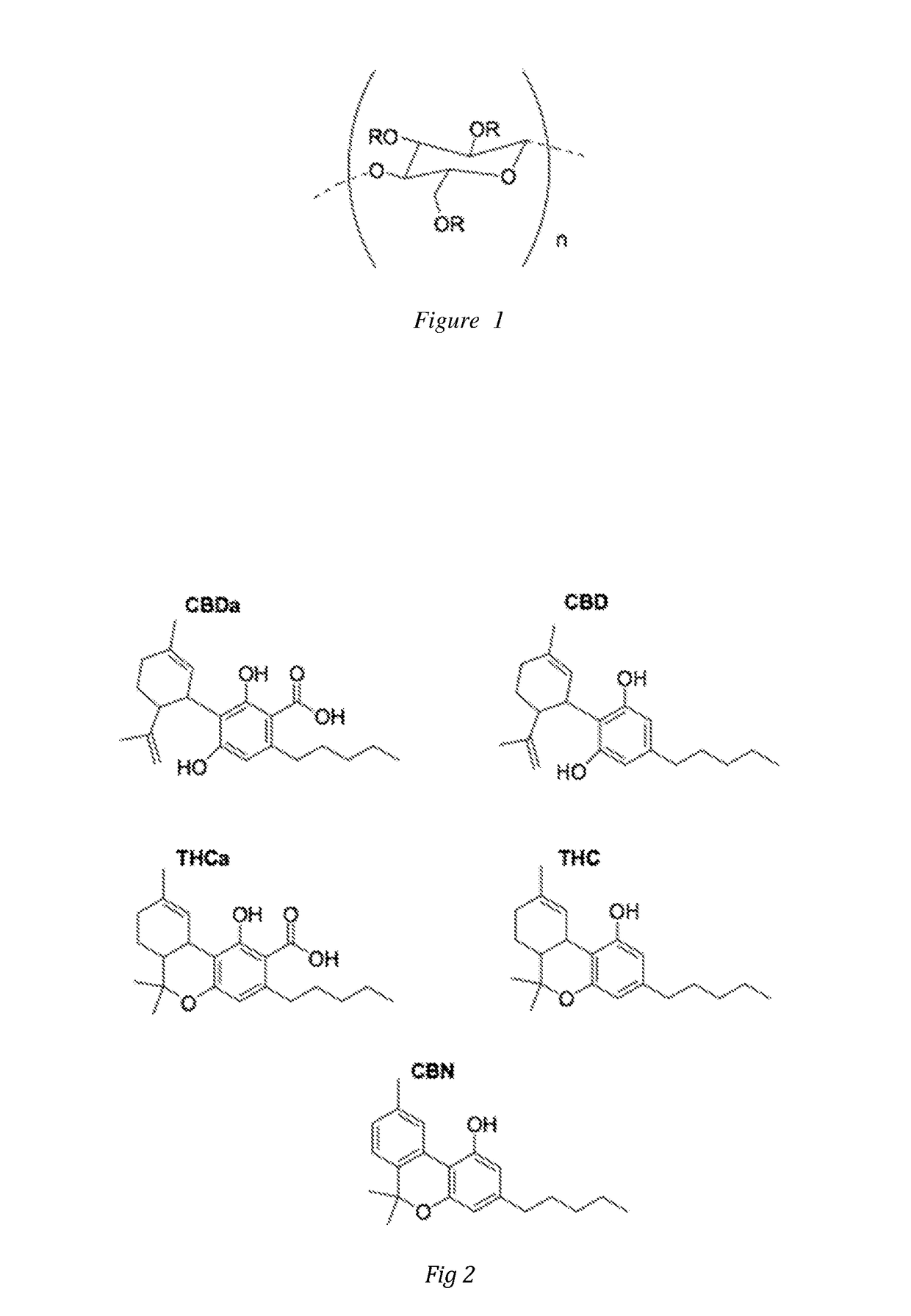Cannabinoid Containing Cannabis Extract Infused into Rolling Paper
a cannabinoid and cannabis extract technology, applied in the field of rolling paper manufacturing, can solve the problems of lack of consistency of concentration, lack of large-scale manufacturers of cigarettes made from tobacco or i>cannabis/i>leaves, oily composition of cannabinoids, etc., and achieves the effect of convenient and substantially uniform dispersion and easy application
- Summary
- Abstract
- Description
- Claims
- Application Information
AI Technical Summary
Benefits of technology
Problems solved by technology
Method used
Image
Examples
Embodiment Construction
[0048]According to the preferred embodiment, cannabinoids are infused into paper during the paper-making / creation process. It is well known that the paper-making process uses a significant amount of water in the various steps of the process. According to well-known paper-making processes, there are three or four principal steps, pulping, filling or web forming, and sizing (and then drying). A binding agent is often used in the creation of paper. To form conventional rolling papers, a binding agent is used in one step, a filling agent used in another step and a sizing agent also used.
[0049]According to the preferred embodiment of the present invention, the infusion of the cannabinoids, in the form of a liquid, is desirably done during the sizing step but can also or alternatively be performed during the pulping, binding step and / or the filling step of paper-making. FIG. 1 shows a representative chemical formula for the single starch unit useful in connection with the present inventio...
PUM
| Property | Measurement | Unit |
|---|---|---|
| Volume | aaaaa | aaaaa |
Abstract
Description
Claims
Application Information
 Login to View More
Login to View More - R&D
- Intellectual Property
- Life Sciences
- Materials
- Tech Scout
- Unparalleled Data Quality
- Higher Quality Content
- 60% Fewer Hallucinations
Browse by: Latest US Patents, China's latest patents, Technical Efficacy Thesaurus, Application Domain, Technology Topic, Popular Technical Reports.
© 2025 PatSnap. All rights reserved.Legal|Privacy policy|Modern Slavery Act Transparency Statement|Sitemap|About US| Contact US: help@patsnap.com

